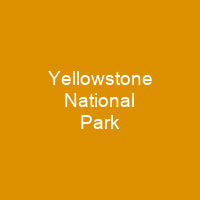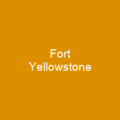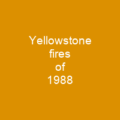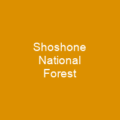Yellowstone National Park: A Natural Wonder and a Historical Gem
Imagine stepping into a world where nature’s grandeur meets history’s rich tapestry—welcome to Yellowstone National Park! This vast expanse of land, nestled in the northwest corner of Wyoming, is not just a park; it’s an experience that transcends time and space.
The Birth of a Wonder
Established on March 1, 1872, Yellowstone National Park was the world’s first national park. It wasn’t always so protected, though. Native Americans had called this land home for at least 11,000 years before European explorers began to venture into the region in the late 1860s. The park’s management has seen its share of changes, from oversight by the U.S. Army to the National Park Service, each adding a layer to its storied history.
A Natural Phenomenon
Yellowstone is renowned for its unique geothermal features like Old Faithful and diverse wildlife, including grizzly bears, cougars, wolves, bison herds, and elk. The park spans 3,468.4 square miles, featuring lakes, canyons, rivers, and mountain ranges, with over half of the world’s geysers and hydrothermal features. In 1978, it was named a UNESCO World Heritage Site, and contains hundreds of documented species of mammals, birds, fish, reptiles, and amphibians.
Geological Marvels
The park’s vast petrified forest, three deep canyons, and 290 waterfalls, with the highest being the Lower Falls of the Yellowstone River, are just a few of its many wonders. The geology of the area is characterized by volcanic activity, with the Yellowstone Caldera being the largest in North America and a ‘supervolcano’ due to its exceptionally large explosive eruptions.
Wildlife Wonders
The park’s unique geothermal features are linked to a mantle plume or the fragmentation of Earth’s interior. The magma chamber under Yellowstone is estimated to be 37 miles long and 18 miles wide, with a depth range of 3-7 miles. This eruption was more than 1,000 times larger than the 1980 eruption of Mount St. Helens. It produced a caldera nearly 5⁄8 mi deep and 45 by 28 miles in area, deposited the Lava Creek Tuff, and ejected 588 cu mi of volcanic material.
Management and Challenges
The park has faced numerous challenges over the years. In its early days, there was considerable local opposition to Yellowstone National Park. Nathaniel Langford was appointed as the park’s first superintendent in 1872 but lacked funding and staff to properly protect the park. The Northern Pacific Railroad built a train station in Livingston, Montana, as a gateway terminus in 1883, increasing visitation to the park.
Modern Management
The National Park Service was created in 1916, taking over management from the army on October 31, 1918. In 1898, naturalist John Muir described the park’s unique geothermal features. By 1915, automobile visits were increasing, leading to conflicts with horses and horse-drawn transportation.
Environmental Concerns
The park has a cultural history documented by 1,000 archeological sites and 1,106 historic structures. It was designated an International Biosphere Reserve in 1976 and a UN World Heritage Site in 1978. Yellowstone is considered the finest megafauna wildlife habitat in the lower 48 states with over 60 species of mammals.
Fire Management
The park experiences thousands of small earthquakes every year, with six earthquakes with magnitude 6 or greater in historical times. The 1959 Hebgen Lake earthquake caused a landslide and triggered geysers to erupt. Yellowstone has three fire lookout towers staffed by trained firefighters. The park monitors fire from the air and relies on visitor reports.
Visitor Experience
Yellowstone National Park is the centerpiece of the Greater Yellowstone Ecosystem, which includes Grand Teton National Park and surrounding forests and wilderness areas. The park has over 69,000 native tree species and supports a key field observation site for the National Ecological Observatory Network.
The Future of Yellowstone
As we look to the future, the challenges facing Yellowstone continue to evolve. From managing wildlife populations to addressing climate change impacts, the park faces new hurdles that require innovative solutions. The recent history of wildfires in 1988 and the ongoing seismic activity highlight the need for adaptive management strategies.
The park’s human history dates back at least 11,000 years to Native American hunting and fishing, with early explorers including John Colter and Jim Bridger. The Yellowstone River was named for its yellow rocks, but the origin of the name is unclear. Heavy spring snows prevented passage but had they been able to traverse the divide, a party would have been the first organized survey to enter the Yellowstone region.
The Cook-Folsom-Peterson Expedition of 1869 was the first detailed expedition to the area, followed by the Washburn-Langford-Doane Expedition in 1870. Nathaniel Langford was appointed as the park’s first superintendent in 1872 but lacked funding and staff to properly protect the park.
In 1898, naturalist John Muir described the park’s unique geothermal features. By 1915, automobile visits were increasing, leading to conflicts with horses and horse-drawn transportation. The Civilian Conservation Corps played a major role in developing Yellowstone facilities between 1933 and 1942.
After World War II, visitation increased, and park officials implemented Mission 66 to modernize facilities. The design style of the new facilities varied over time, but many reverted to traditional designs after the 1988 forest fires. It was the most powerful earthquake to hit the region in recorded history.
In 2004, five dead bison were found with toxic geothermal gases. Earthquake activity increased, and areas like Mallard Lake Dome rose at a rate of 1.5-2.4 inches per year from 2004 to 2006. Experts stated there was no increased risk of volcanic eruption.
Yellowstone experiences thousands of small earthquakes every year. There have been six earthquakes with magnitude 6 or greater in historical times, including the 1959 Hebgen Lake earthquake that caused a landslide and triggered geysers to erupt. Earthquake swarms occurred in 1985 and from April 30, 2007, causing minor damage.
Yellowstone’s climate is influenced by altitude, with lower elevations warmer year-round. The record high temperature was 99°F, while the coldest temperature recorded was -66°F. Summer temperatures range from 70 to 80°F, while nighttime lows can go below freezing at higher altitudes.
The park’s flora includes lodgepole pine forests covering 80% of forested areas, as well as conifers like subalpine fir and Rocky Mountain Douglas-fir. Species such as quaking Aspen and willows are common deciduous trees. The yellowstone sand verbena is a rare flowering plant found only in Yellowstone.
In the park’s hot waters, bacteria form mats with bizarre shapes consisting of trillions of individuals. These bacteria thrive on molecular hydrogen and can survive in bitterly cold winters. Thermus aquaticus is a bacterium found in Yellowstone hot springs that produces Taq polymerase, an enzyme useful in PCR. Retrieval of these bacteria does not harm the ecosystem.
Non-native plants can threaten native species by occupying nutrient resources. Yellowstone is considered the finest megafauna wildlife habitat in the lower 48 states with over 60 species of mammals. The Yellowstone Park bison herd is one of only four free-roaming and genetically pure herds on public lands in North America.
Bison populations are a concern for ranchers due to potential disease transmission, but ecological arguments suggest the risk is low. National park personnel regularly corral bison herds back into the park when they venture outside, sparking debate over animal welfare and disease prevention. Park Service hunters killed 136 wolves by 1926, virtually eliminating them from Yellowstone.
Wolves were reintroduced in 1995-96 and their populations remained stable. By 2008, the Northern Rocky Mountain wolf population was removed from the endangered species list. As of January 2023, there are at least 108 wolves in the park.
Black bears were a symbol due to visitor interaction starting in 1910. Feeding bears is not permitted since the 1960s. Yellowstone is one of few places where black bears coexist with grizzly bears. Grizzly bears initially listed as threatened in 1975, delisted in 2007 but reinstated in 2009. They were removed from the list again in 2017.
A U.S. district judge ordered the restoration of grizzly bear protections in Yellowstone National Park. The park’s elk population has declined due to wolf predation and habitat changes. Lynx have not been seen in the park since 1998, but DNA evidence suggests they may still exist. Yellowstone is home to over 18 species of fish, including the threatened cutthroat trout, which faces threats from invasive lake trout and a parasite known as whirling disease.
The park supports over 311 species of birds, including bald eagles and whooping cranes. Other birds considered rare in Yellowstone include the common loon, harlequin duck, osprey, peregrine falcon, and trumpeter swan.
Conclusion
Yellowstone National Park is more than just a collection of natural wonders; it’s a living testament to history, geology, and the resilience of nature. As we continue to explore and protect this unique place, let us remember that every visit brings us closer to understanding the intricate balance of life on Earth.

You want to know more about Yellowstone National Park?
This page is based on the article Yellowstone National Park published in Wikipedia (retrieved on December 16, 2024) and was automatically summarized using artificial intelligence.







